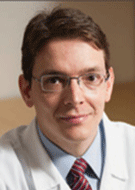Your Donations in Action: Andrei S. Purysko, MD
Using radiogenomics of MRI to identify visible and invisible prostate cancers

Prostate cancer (PCa) is the most common cancer and the second leading cause of cancer deaths in American men. Multiparametric MRI (mp-MRI) is increasingly used to aid in PCa detection and risk stratification. To fully understand the significance of the mp-MRI phenotypes of PCa, including of those not distinctly seen, it is necessary to evaluate their risk for progression and metastases based not only on traditional histologic features that have been associated with aggressive disease, but also on the expression of genes that carry potential for aggressiveness.
In his 2017 Philips/RSNA Research Seed Grant, “Radiogenomics of Multiparametric Magnetic Resonance Imaging Visible and Invisible Prostate Cancers,” Andrei S. Purysko, MD, Cleveland Clinic and Case Western Reserve University School of Medicine, both in Cleveland, used machine learning (ML) approaches to demonstrate that MRI signatures of prostate cancer can determine tumor aggressiveness based on their correlation with a panel of genes that predicts the risk of metastases and cancer-related mortality independent of their clinicopathologic features.
Dr. Purysko and his team identified computer-extracted quantitative mp-MRI features of mp-MRI-visible and mp-MRIinvisible tumors that distinguish among low- and high-risk tumors, with risk defined on the basis of a validated gene expression assay (Decipher® Prostate Cancer Classifier, GenomeDX Biosciences) performed on radical prostatectomy (RP) specimens that evaluates the probability of metastases and PCa-related mortality within five- and 10-years after RP, respectively. Randomized cross-validation methods were employed to evaluate the ability of the ML approaches to identify image-derived signatures for lowand high-risk tumors.
“This novel approach will allow mp-MRI to be used as a personalized risk stratification method and may in turn improve treatment selection and reduce the number of unnecessary treatments,” Dr. Purysko said.
Watch Dr. Purysko discuss his study and how the R&E Research Foundation grant assisted with his research.